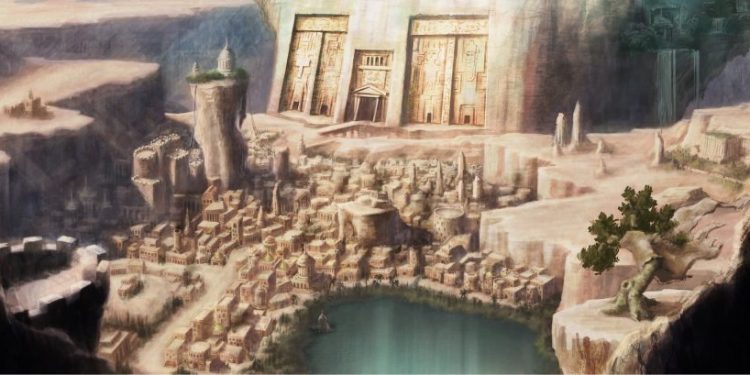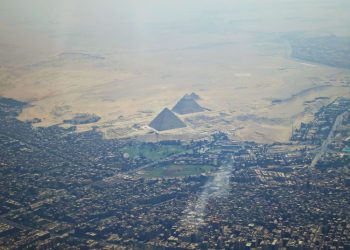Several millennia before Egypt’s first pyramid was erected, an ancient city was built in present-day Syria. Its importance resides in the fact that, given its age, it is one of the earliest settlements in the history of mankind, and it tells us a great deal of information about how society as we know it came to be.
With traces of habitation spanning as far back as the last Ice Age, the ancient city of Aleppo is considered one of the oldest cities on the planet’s surface when the city started off as a small population center. Archeological excavations at a site no more than 15 miles from the center of the ancient city have yielded archeological data, which clearly shows that the city, as well as its neighboring region, was occupied for at least 13,000 years. This fact makes the ancient city of Aleppo and its neighboring area one of the oldest continuously occupied cities on the planet.
Predating the pyramids
Ancient to ancient civilizations, the settlements that would eventually give birth to Aleppo predate even the oldest Egyptian pyramids. Like many other ancient cities, its original name remains an enigma since ancient texts originating from the founding of the ancient settlements have never been discovered. Although its history dates back to when history was probably not even reported, the city was mentioned for the first time in clay cuneiform tablets that were crafted some 5000 years ago, which already mentioned the city as a commercial and military power.
This means that the city was already an important center in the region, which tells us that long before 5,000 years ago, the city was popular among people in the area. Its more central parts were probably inhabited since the 6th millennium BC. Excavations at Tell as-Sawda and Tell al-Ansari, just south of the old city of Aleppo, show that Amorites occupied the area since at least the latter part of the 3rd millennium BC.
Why so popular?
Aleppo’s prominence may have stemmed from its strategic location, positioned between the Mediterranean Sea and Mesopotamia—right at the western end of the Silk Road, which stretched from Central Asia to Mesopotamia. This prime location made Aleppo one of the most significant trading hubs in the region. Historical records indicate that Aleppo emerged as a major city long before Damascus (the capital of modern-day Syria), suggesting that by the time Damascus rose to prominence, Aleppo had already established itself as a dominant center of commerce and culture.
While many scholars argue that Damascus is older than Aleppo, archaeological evidence tells a different story. Excavations at Tell Ramad, near Damascus, reveal traces of human habitation dating back 11,000 years, placing early settlements around 9,000 BC.
Despite Damascus’ deep historical roots, ancient accounts often refer to Aleppo as the center of the ancient world. Yet, despite its age and significance, Aleppo remains understudied by archaeologists—largely because the modern city is built directly atop the ancient ruins.
Experts estimate that ancient Aleppo covered an area of approximately 160 hectares (400 acres or 1.6 km²). Historical records describe the city as being enclosed by a 5-kilometer (3-mile) defensive wall, last reconstructed by the Mamluks.
Unfortunately, much of the ancient city has been destroyed over time, and most of its once-mighty walls have vanished. However, five of the city’s nine gates remain well-preserved, offering a glimpse into its storied past. The city walls were further reinforced by a broad, deep moat, providing an extra layer of protection against invaders.
The Ebla Tablets
In the Ebla tablets, the ancient city of Aleppo was referred to as Ha-lam. The first record of Aleppo most likely originates from the third millennium BC if the identification of Aleppo as Armi, a city-state closely related to Ebla, is correct.
One of its most famous parts—although not as ancient as the city itself—is the so-called Citadel of Aleppo, a large medieval fortified palace located at the center of the ancient city. In fact, this structure is considered one of the oldest and largest castles constructed on the planet’s surface.
Evidence of the citadel’s history can be traced back to the 3rd millennium BC. Although many ancient civilizations conquered the city, most of the citadel’s construction is attributed to the Ayyubid period.
The hill atop which the citadel was built is considered of great importance since it is where there the prophet Abraham is said to have milked his sheep.
Researchers estimate that around 30% of the Ancient City of Aleppo has been destroyed in recent military fights.
Djoser’s pyramid
The Egyptian Pyramids are thought to have arisen during the Third Dynasty reign of Pharaoh Djoser if the historical timeline set out by Egyptologists is correct. The Pyramid of Djoser at Saqqara is widely acknowledged as the earliest colossal stone building in Egypt and large-scale cut-stone construction. The pyramid was completed in no more than 19 years, during which the builders not only erected the pyramid, its temples, and surrounding limestone wall but a massive subterranean world with a length of around 5.7 kilometers.
Göbekli Tepe
It is noteworthy that by the time Aleppo was established as a settlement, a mysterious group of people built not far from Syria what is considered the oldest temple on the planet’s surface. Predating Stonehenge by around 6,000 years, Göbekli Tepe is located in southeastern Turkey and is thought to have been erected by hunter-gatherers between 13,000 and 11,000 years ago.
To date, archeologists have discovered more than 200 pillars at Göbekli Tepe, all of which have been built inside 20 circles. Some pillars at Göbekli Tepe weigh more than 10 tons. This fact has led many experts to question whether hunter-gatherers were sophisticated enough to construct an ancient temple complex the size of Göbekli Tepe at the end of the Last Glacial period on Earth.
Şanlıurfa, in turn, is located around 230 kilometers from the ancient city of Aleppo. The relatively close proximity of the two sites suggests that between 13,000 and 11,000 years ago, the wider region was inhabited by people much more sophisticated than hunter-gatherers or nomads. All the above would suggest that some 8,000 years before the Pyramid of Saqqara, people in the region of Aleppo had the ability to erect standing stone structures.
***The Featured image is an artist’s illustration and not the actual representation of what the ancient city of Aleppo may have looked like.











